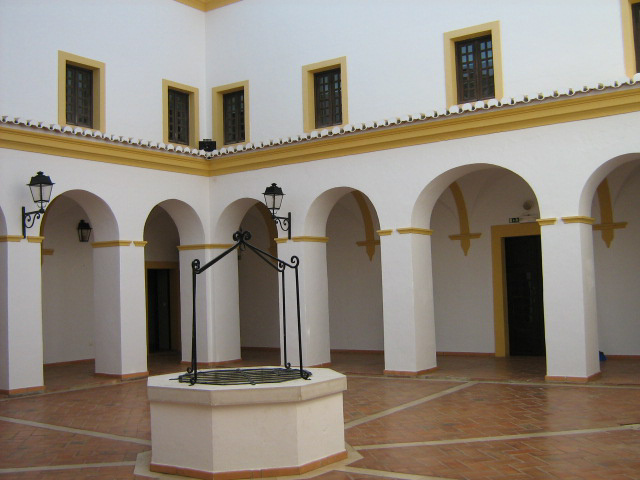|
Fort Of Nossa Senhora Da Rocha (Porches)
The Fort of Nossa Senhora da Rocha (also known as the ''Fort of Our Lady of the Rock'' or ''Castle of Porches'') is a medieval castle situated in the civil parish of Porches, in the municipality of Lagoa in Portuguese Algarve. Inside the fort is the Chapel of Nossa Senhora da Rocha, of uncertain date. History Doubt continues to exist as to the origin of the Chapel of Nossa Senhora da Rocha, as well as the original fort that existed on this site. The privileged location on a promontory reflects the importance of the site, which was fortified to help secure the coast from ''Ossonoba'' ( Faro) to ''Lacobriga'' (Lagos), as well as protecting the beach and maritime access. The 8th century is normally used as a reference, suggesting a construction based on the reuse of existing Roman-era elements. The actual configuration of the temple is difficult to catalog. On one hand, the constructors reused the capitals, presupposing a public construction that occurred in the High Middle Ages. On ... [...More Info...] [...Related Items...] OR: [Wikipedia] [Google] [Baidu] |
Lagoa Municipality (Algarve)
Lagoa () is a city and municipality in the district of Faro, in the Portuguese region of Algarve. The population of the municipality in 2011 was 22,975, in an area of 88.25 km². Its urban population, in the city of Lagoa proper, is 6,100 inhabitants. An important travel destination, its coast has won numerous accolades. Marinha Beach was considered by the Michelin Guide as one of the 10 most beautiful beaches in Europe and as one of the 100 most beautiful beaches in the world. History According to some historical sources, the earliest settlement in the area occurred along the edges of small lakes or marshes ( pt, lagoa), which were drained in order to create a fertile land. There are many pre-historic vestiges of the early settlements, including menhirs (standing stones), funerary necropoles and artifacts that date a human presence to remote history. After the Celtiberian era, including the age of Cynete presence and domination, followed by the arrival of the Roman Empir ... [...More Info...] [...Related Items...] OR: [Wikipedia] [Google] [Baidu] |
Mozarab
The Mozarabs ( es, mozárabes ; pt, moçárabes ; ca, mossàrabs ; from ar, مستعرب, musta‘rab, lit=Arabized) is a modern historical term for the Iberian Christians, including Christianized Iberian Jews, who lived under Muslim rule in Al-Andalus following the conquest of the Christian Visigothic Kingdom by the Umayyad Caliphate. Initially, the vast majority of Mozarabs kept Christianity and their dialects descended from Latin. Eventually, some converted to Islam and were influenced, in varying degrees, by Arab customs and knowledge, and sometimes acquired greater social status in doing so. The local Romance vernaculars, with an important contribution of Arabic and spoken by Christians and Muslims alike, have also come to be known as the Mozarabic language. Mozarabs were mostly Roman Catholics of the Visigothic or Mozarabic Rite. Due to Sharia and Fiqh being confessional and only applying to Muslims, the Christians paid the jizya tax, the only relevant Islamic Law oblig ... [...More Info...] [...Related Items...] OR: [Wikipedia] [Google] [Baidu] |
Castles In The Algarve
A castle is a type of fortified structure built during the Middle Ages predominantly by the nobility or royalty and by military orders. Scholars debate the scope of the word ''castle'', but usually consider it to be the private fortified residence of a lord or noble. This is distinct from a palace, which is not fortified; from a fortress, which was not always a residence for royalty or nobility; from a ''pleasance'' which was a walled-in residence for nobility, but not adequately fortified; and from a fortified settlement, which was a public defence – though there are many similarities among these types of construction. Use of the term has varied over time and has also been applied to structures such as hill forts and 19th-20th century homes built to resemble castles. Over the approximately 900 years when genuine castles were built, they took on a great many forms with many different features, although some, such as curtain walls, arrowslits, and portcullises, were ... [...More Info...] [...Related Items...] OR: [Wikipedia] [Google] [Baidu] |


